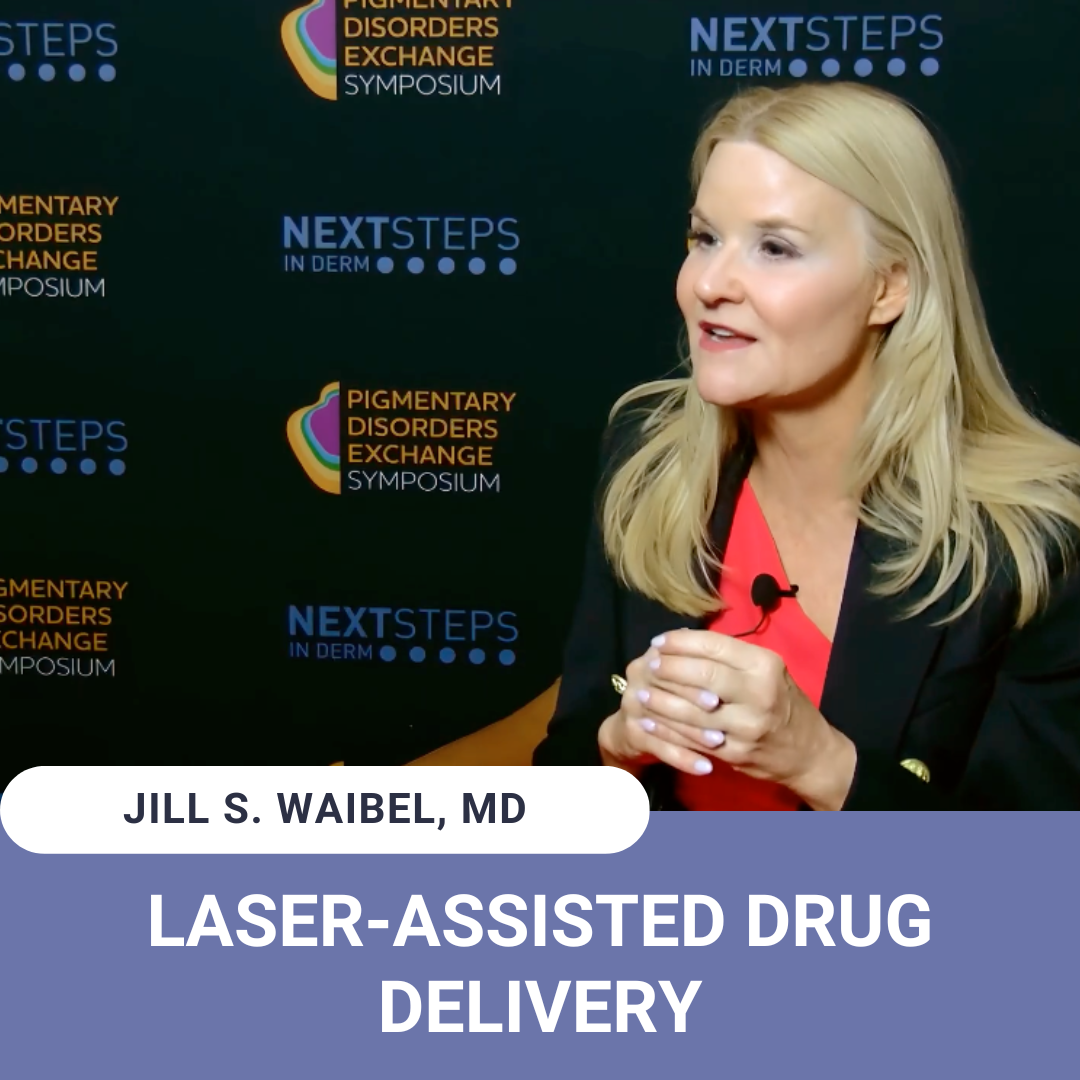Next Steps in Derm, in partnership with Pigmentary Disorders Exchange Symposium interviewed Dr. Jill S. Waibel, subsection chief of dermatology at Baptist Hospital of Miami, medical director of the Miami Cancer Institute’s Multispecialty Skin Cancer Clinic, and assistant voluntary professor at the University of Miami Miller School of Medicine. Learn about the emerging field of laser-assisted drug delivery and how it can help with pigmentary disorders, including hypopigmentation and PIH. Hear about the results of a head-to-head trial on hypopigmentation and why laser-assisted delivery of a glaucoma drug proved most effective.
Further Reading
If you want to read more about laser-assisted drug delivery, check out the following articles published in the Journal of Drugs in Dermatology:
ABSTRACT
Background: Hypopigmentation is a common cutaneous manifestation that frequently poses a therapeutic challenge for dermatologists. Current treatments have varying efficacies and rarely provide patients with long-term results. However, new treatments are emerging, and head-to-head studies comparing these treatments are warranted.
Methods & Materials: In this prospective, Institutional Review Board (IRB)-approved, double-blinded study, 40 subjects with moderate to severe hypopigmentation were randomized into 1 of 4 treatment arms; non-ablative fractional laser, ablative fractional laser, ablative fractional laser with laser-assisted delivered bimatoprost, and an epidermal harvesting system.
Results: All patients in this study showed improvement regardless of the treatment modality. The average improvement score was calculated on a 0 to 4 scale, and Group 3 (fractional ablative laser and bimatoprost) was found to have a significantly higher average improvement than all other treatments, with 76% of the patients exhibiting at least a grade 3 (over 50%) improvement over the treatment course. Group 1 (non-ablative fractional) also had a significantly higher average score compared with group 2 (fractional ablative laser).
Conclusion: New and emerging therapies have shown promise in helping re-pigmentation of cutaneous hypopigmentation. In this head-to-head trial, it was shown that laser-assisted delivery of bimatoprost had a greater statistically significant improvement compared with 3 possible treatment modalities for stimulation of pigment in medical and cosmetic hypopigmentation.
ABSTRACT
Keloids are fibrous growths that occur as a result of abnormal response to dermal injury. Keloids are cosmetically disfiguring and may impair function, often resulting in decreased patient quality-of-life. Treatment of keloids remains challenging, and rate of recurrence is high. We present a case of a 39-year-old African-American man (Fitzpatrick VI) with a 10-year history of keloid, who was successfully treated with eight sessions of fractionated carbon dioxide (CO2) laser immediately followed by laser-assisted drug delivery (LADD) of topical triamcinolone acetonide (TAC) ointment and review the medical literature on fractionated CO2 laser treatment of keloids. To the best of our knowledge, this is the first report of successful treatment of a keloid using combination therapy of fractionated CO2 laser and LADD with topical TAC ointment in an African-American man (Fitzpatrick VI) with excellent cosmetic results sustained at 22 months post-treatment. We believe that this combination treatment modality may be safe and efficacious for keloids in skin of color (Fitzpatrick IV-VI) and other patients. This case highlights the ability of laser surgeons to safely use fractionated CO2 lasers in patients of all skin colors.
Did you enjoy this video interview? Find more here.

